Recent Posts
The SERVPRO® Emergency Ready Plan Advantage
7/29/2024 (Permalink)
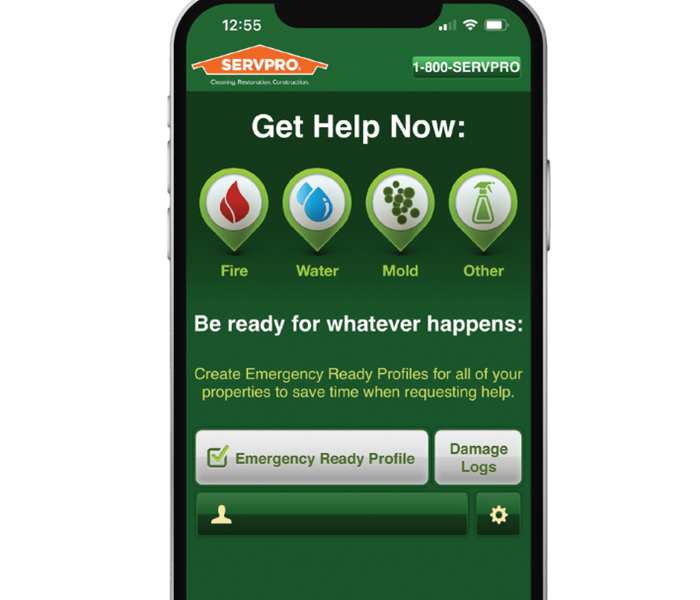 Photo of ERP phone App.
Photo of ERP phone App.
When disaster strikes your business, having a plan in place ahead of time for what you will do can make all the difference in whether your business survives the event. The majority of businesses that come out stronger on the other side of an emergency are the ones that pre-planned for one.
That’s where SERVPRO’s Emergency Ready Plan (ERP) can help give you, your employees and customers peace of mind. You can trust that whatever might happen to disrupt daily business will only be temporary.
With our Emergency Ready Plan, your business will be able to minimize interruption because you’ll know what to do and what to expect if any-sized disaster strikes. This is important to timely mitigation and can help minimize how water and fire damage can affect your business.
Water Damage Indicators
5/6/2024 (Permalink)
 Water damaged ceiling tile
Water damaged ceiling tile
Here are some of the most common indicators of water damage:
Water Accumulation
One of the most visible signs of water damage, water accumulation can come from malfunctioning appliances such as dishwashers, water heaters, faucets, and toilets. Pooling water is a form of water accumulation that can be easy to spot, typically a result of a leaking roof or faulty drainage pipes.
Discoloration
Water can cause great aesthetic damage to your home if left unchecked. It can stain walls and carpets, as well as rust your home’s pipes and water heater. By keeping a close watch on any leakage problems, you can prevent your nice home from becoming a brown musty mess.
Changes in Texture
When water seeps into the floorboards of tiles and areas underneath them, it can alter their texture. For example, wood and laminated floors expand when they absorb a lot of water, unsticking them from the base. Although this kind of damage is easy to spot, it may be difficult to identify the source of the damage.
Odor
One of the telltale signs of water damage is odor. If you consistently find yourself smelling mold, mildew, and other muggy scents then you probably have a water damage problem. Certain drywall materials, such as tape and frames, act like a sponge and attract and absorb moisture. These are the perfect conditions for mold to develop, which leads to those pesky odors.
Staying Safe in a Tornado
4/25/2024 (Permalink)
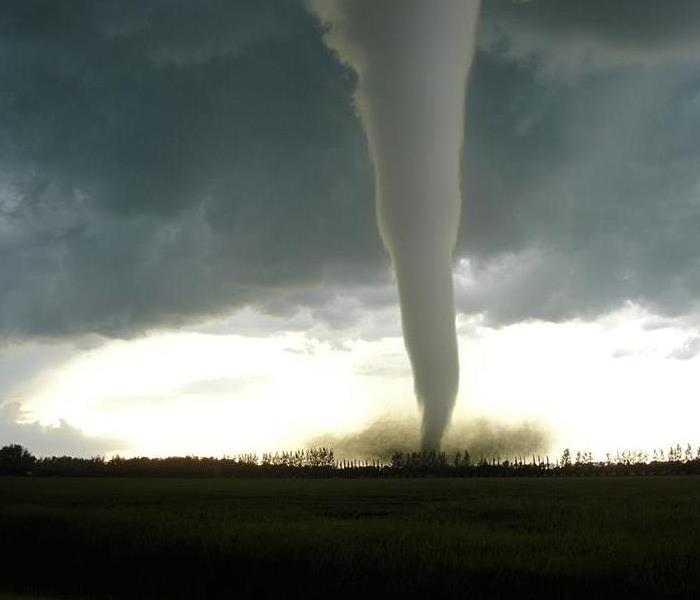 Tornado touching ground
Tornado touching ground
TIP ?: Be prepared.
The best way to stay safe during a tornado is to be prepared with the following items:
- Fresh batteries and a battery-operated TV, radio, or internet-enabled device to listen to the latest emergency weather information
- A tornado emergency plan including access to a safe shelter for yourself, your family, people with special needs, and your pets
- An emergency kit (including water, non-perishable food, and medication)
- A list of important information, including telephone numbers
Be sure your children know what a tornado is, what tornado watches and warnings are, what county or parish they live in (warnings are typically issued by county or parish), and what makes a location a safe shelter, whether at home or at school.
TIP ?: Stay aware of weather conditions.
To protect yourself and your loved ones from harm during a tornado, pay close attention to changing weather conditions in your area. If you know thunderstorms are expected, stay tuned to local radio and TV stations or a NOAA weather radio station for further weather information. Some tornadoes strike rapidly without time for a tornado warning. The following weather signs may mean that a tornado is approaching:
- A dark or green-colored sky
- A large, dark, low-lying cloud
- Large hail
- A loud roar that sounds like a freight train
If you notice any of these conditions, take cover immediately, and stay tuned to local radio and TV stations, a NOAA weather radio station, or the internet.
TIP ?: Know where to shelter.
Falling and flying debris causes most injuries and deaths during a tornado. Although there is no completely safe place during a tornado, some locations are much safer than others.
- Go to the basement or an inside room without windows on the lowest floor (bathroom, closet, center hallway).
- If possible, avoid sheltering in any room with windows.
- For added protection get under something sturdy (a heavy table or workbench). Cover your body with a blanket, sleeping bag or mattress. Protect your head with anything available.
- Do not stay in a mobile home.
If you are outside or in a mobile home, find a nearby building, preferably with a basement. If you are in a car, do not try to outrun a tornado, but instead find the nearest sturdy building.
No one can know a tornado’s strength before it touches down, so keep up with local weather information, especially when thunderstorms are forecasted. Prepare your home and family for the possibility of a tornado. Moving to a shelter quickly is easier when everyone knows where to go, whether in your home or outdoors. Following these tips will give you the best chance for staying safe.
CDC.GOV
What Is Mold
4/25/2024 (Permalink)
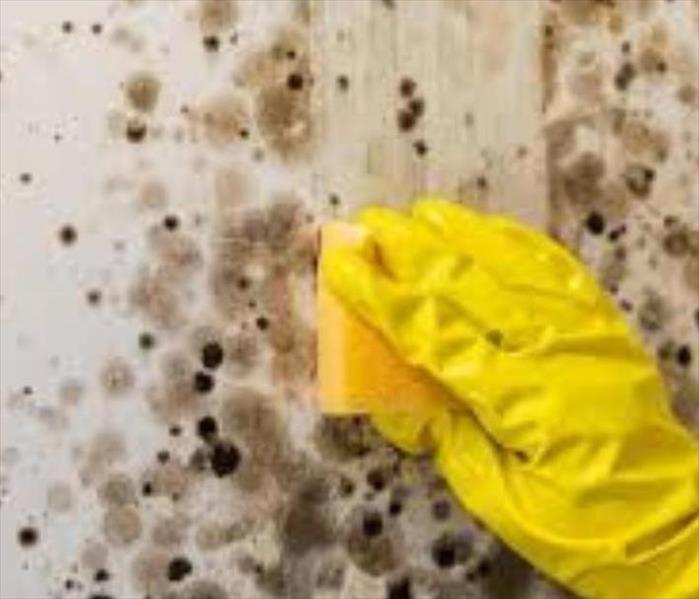 black mold around window
black mold around window
When your business develops a mold problem, it can be an unsightly nuisance that can make your place seem less than clean. Depending on the source behind it, mold could also mean more serious problems that could lead to disruption in your daily business functions. Mold is a natural part of the environment, and it cannot be completely eradicated. Mold spores are present almost anywhere that moisture and oxygen are present—both indoors and outdoors. They can enter your building in many ways, including open windows, HVAC systems—even on clothing.
Any mold damage on your commercial property should be taken seriously to avoid further damage and should be remediated promptly. It only takes a few days for mold spores to thrive and spread around your business, and often begins with a musty odor in the air. That’s when it’s time to call mold remediation specialists like SERVPRO, who will assess your mold issue and work to determine the source so that damage causing mold doesn’t return.
Space Heater Safety Tips
2/12/2024 (Permalink)
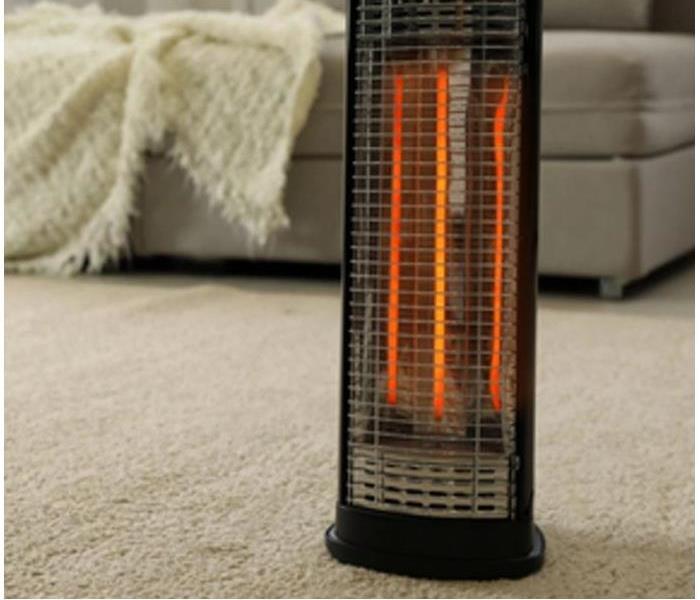 Space Heater in a Room
Space Heater in a Room
Heating equipment is the second leading cause of home fires in the United States. More than 65,000 home fires are attributed to heating equipment each year. These fire result in hundreds of deaths, thousands of injuries and millions of dollars in property damage.
Portable electric space heaters can be a convenient source of supplemental heat for your home in cold weather. Unfortunately, they can pose significant fire and electric shock hazards if not used properly. Fire and electrical hazards can be caused by space heaters without adequate safety features, space heaters placed near combustibles, or space heaters that are improperly plugged in.
Safety should always be a top consideration when using space heaters. Here are some tips for keeping your home safe and warm when it’s cold outside:
- Make sure your space heater has the label showing that it is listed by a recognized testing laboratory.
- Before using any space heater, read the manufacturer’s instructions and warning labels carefully.
- Inspect heaters for cracked or broken plugs or loose connections before each use. If frayed, worn or damaged, do not use the heater.
- Never leave a space heater unattended. Turn it off when you’re leaving a room or going to sleep, and don’t let pets or children play too close to a space heater.
- Space heaters are only meant to provide supplemental heat and should never be used to warm bedding, cook food, dry clothing or thaw pipes.
- Install smoke alarms on every floor of your home and outside all sleeping areas and test them once a month.
- Proper placement of space heaters is critical. Heaters must be kept at least three feet away from anything that can burn, including papers, clothing and rugs.
- Locate space heaters out of high traffic areas and doorways where they may pose a tripping hazard.
- Plug space heaters directly into a wall outlet. Do not use an extension cord or power strip, which could overheat and result in a fire. Do not plug any other electrical devices into the same outlet as the heater.
- Place space heaters on level, flat surfaces. Never place heaters on cabinets, tables, furniture, or carpet, which can overheat and start a fire.
- Always unplug and safely store the heater when it is not in use.
Frozen Pipe Prevention
1/2/2024 (Permalink)
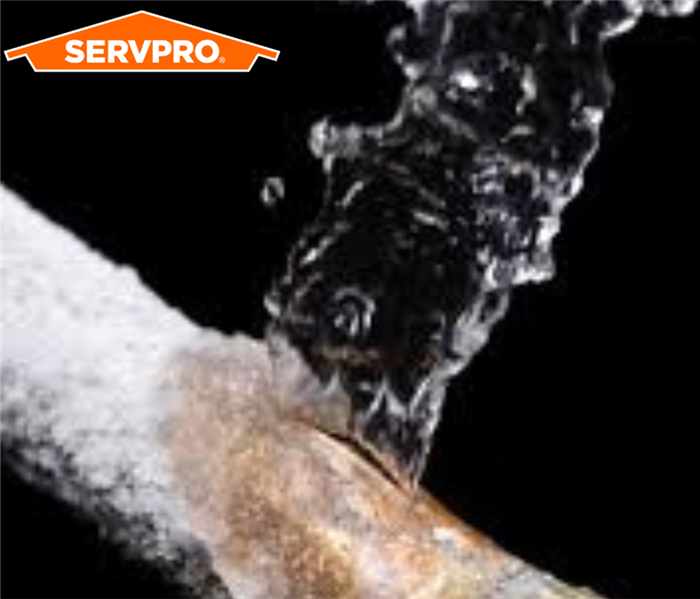 Frozen Pipe
Frozen Pipe
One of the most common reasons why water pipes burst is due to freezing. When the temperature drops, the water inside the pipes can freeze, expand, and cause the pipes to burst. To prevent this from happening, there are a few steps you can take:
- Insulation. Insulating exposed pipes with insulation wraps or foam sleeves is a common and useful way to prevent pipes from freezing.
Seal air leaks. Sealing air leaks around windows, doors, and ventilation fans can prevent cold air from reaching the pipes.
Let faucets drip. Running water through pipes helps to prevent them from freezing, so be sure to let faucets drip slightly during cold weather.
Fire Facts: Christmas Trees
11/27/2023 (Permalink)
Safety Tips
Use of lights that produce low heat, such as miniature lights, will reduce drying of the tree.
Always inspect light sets prior to placing them on the tree. If worn, replace with a new set.
Do not overload electrical circuits.
Always turn off the lights when leaving the house or when going to bed.
Monitor the tree for freshness. After Christmas or if the tree is dry, remove it from the house.
Find a recycling program near you.
Never burn any part of a Christmas Tree in a wood stove or fireplace.
Tornado Safety
5/1/2023 (Permalink)
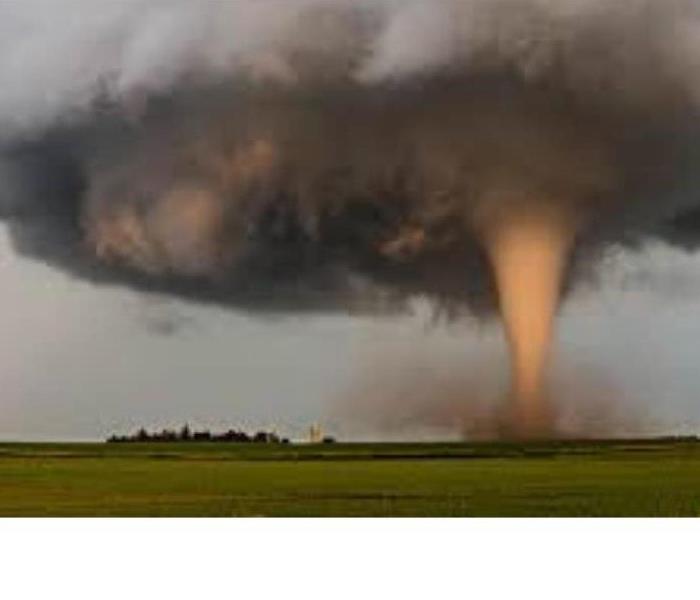 Spring is Tornado Season
Spring is Tornado Season
Tornado Safety
Keeping informed about the weather is the best way to avoid being caught in a tornado or severe thunderstorm. Your local National Weather Service Forecast Office provides information about dangerous weather in your area, and you should keep a close eye on this information whenever storms threaten your area. A battery operated NOAA Weather Radio with a warning alarm feature should be a part of your information system!
It’s also critical that you think about tornado safety long before there’s a storm on the horizon, and plan what you will do to stay safe no matter where you may be when storms threaten.
When a severe storm or tornado threatens, remember these basic guidelines:
GET IN - get as far inside a strong building as you can, away from doors and windows
GET DOWN - get to the lowest floor
COVER UP - use whatever you can to protect yourself from flying or falling debris
- A reinforced underground storm shelter, storm cellar, enclosed basement or safe room are usually the safest places in a tornado. Underground shelters get you out of the way of flying and falling debris, which is a tornado’s most lethal weapon.
- If you cannot get underground, remember the basic guidelines. Get as far inside the strongest building you can find. Stay away from doors, windows and other openings to the outside. Put as many walls between you and the outside as you can.
- Get as low as you can. Go to the lowest floor of the building you’re in.
- Cover up to protect yourself from flying and falling debris. Use whatever you can find - pillows, blankets, sleeping bags, mattresses. Wearing a helmet or hardhat will help protect your head from debris.
- Being outdoors, in a mobile home, or in a vehicle are all unsafe in a tornado or severe thunderstorm. Find stronger shelter before the storm arrives and remember to get in, get down and cover up.
Why SERVPRO for Residential Restoration Services
4/3/2023 (Permalink)
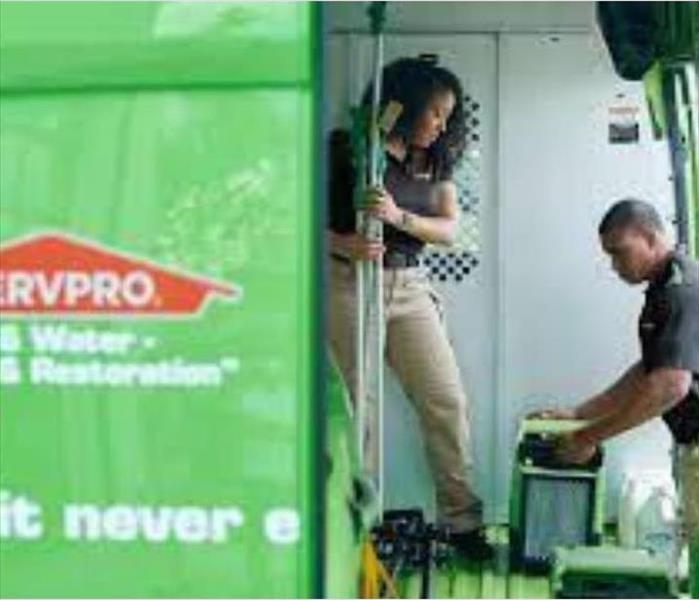 Residential Restoration Services
Residential Restoration Services
As a trusted leader in the restoration industry, you can depend on SERVPRO, whether you need emergency flood damage restoration or your upholstery cleaned. We have the training, experience, and equipment to make your house feel like home again.
- 24-hour emergency service
- Highly trained restoration technicians
- Faster to Any Sized Disaster
- A trusted leader in the restoration industry with more than 2,000 franchises
- Advanced restoration and cleaning equipment
Residential Restoration Services
Fire, water, and mold restoration are the cornerstones of our business. SERVPRO is dedicated to responding to your emergency fast. Our focus on training ensures we have the expertise and skills needed to promptly restore your property right the first time. Our restoration services include the following:
- Water Damage Restoration
- Fire Damage Restoration
- Mold Remediation
- Storm and Major Events
Residential Cleaning Services
Life happens. Kids spill drinks, pets have accidents, and homes get dirty. SERVPRO offers cleaning services ranging from air duct cleaning to removing biohazard contaminants. Their residential cleaning services will not only ease the burden of the constant maintenance of your home, but will also create a safe, clean, and comfortable living environment for your family. Our cleaning services include the following:
- Overview of Residential Cleaning
- Air Ducts & HVAC
- Biohazard
- Carpet and Upholstery
- Ceiling, Floors & Walls
- Drapes and Blinds
- Odor Removal
- Sewage and Toilet Overflow
- Trauma and Crime Scene
- Vandalism and Graffiti
Sewer Backup!!!
3/2/2023 (Permalink)
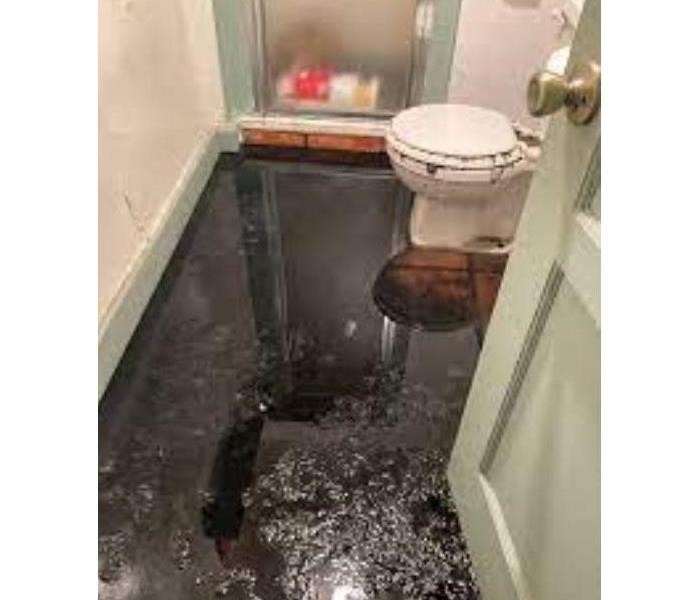 Toilet overflow
Toilet overflow
Sewer backups should be considered an emergency since the water may contain viruses, bacteria, and other microbes that cause serious illnesses. SERVPRO has the specialized training and equipment to quickly and safely clean contaminants like sewage.
Water damage can be classified by the three types of contaminated water. SERVPRO will inspect your home or business to determine the appropriate plan of action for the type of water encountered.
The three types of contaminated water:
Category 1:
Category 1 water is from a clean source like a broken water supply line or leaking faucet. If not treated quickly, this water can turn into category 2 or 3, depending on length of time, temperature, and contact with surrounding contaminants.
- Water from a clean source like a broken water line
- If left untreated, can degrade into category 2 or 3
Category 2:
Category 2 water is contaminated and could cause discomfort or illness. Examples include washing machine overflow; toilet overflow with some urine, but no feces; or dishwasher overflow.
- May contain bacteria and viruses
- Can quickly degrade into category 3 if left untreated
Category 3:
Category 3 water is grossly contaminated and could cause severe illness or death if ingested and any contact should be avoided. Examples include flooding from rivers or streams, water from beyond the toilet trap, water from the toilet bowl with feces, or standing water that has begun to support microbial growth.
- May contain untreated sewage, harsh chemicals, and microbes
- Water from flooding rivers or sewer backup
24-Hour Emergency Service
Water contaminated with sewage backup should be considered an emergency situation and dealt with as quickly as possible. SERVPRO of Mayes & Wagoner Counties is available 24 hours a day, 365 days a year. They are water damage restoration specialists with specialized training, equipment and protective gear to safely restore your home or business.






 24/7 Emergency Service
24/7 Emergency Service








